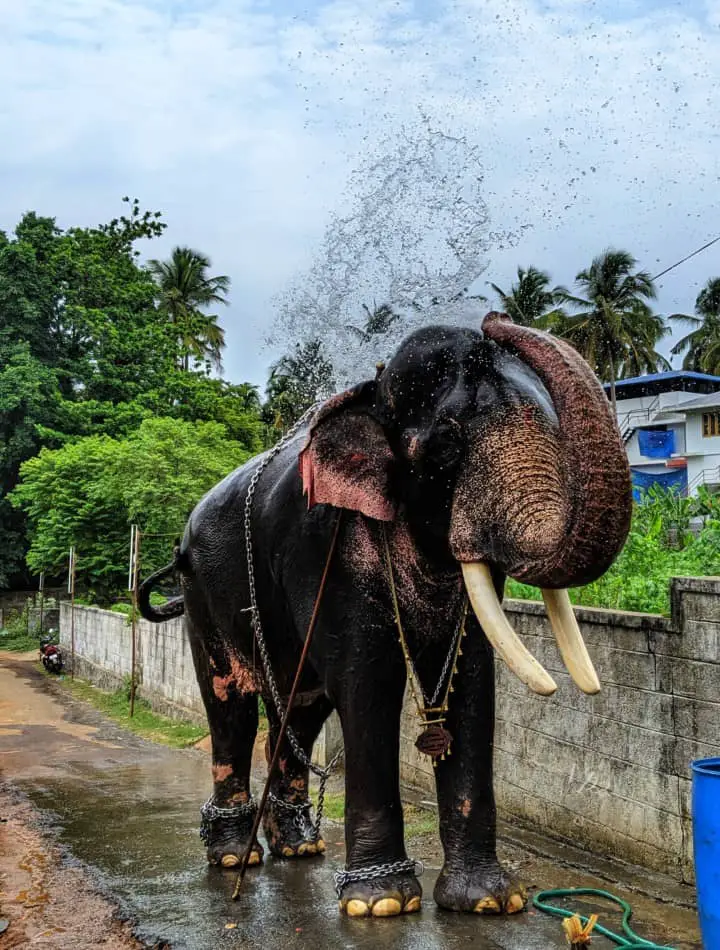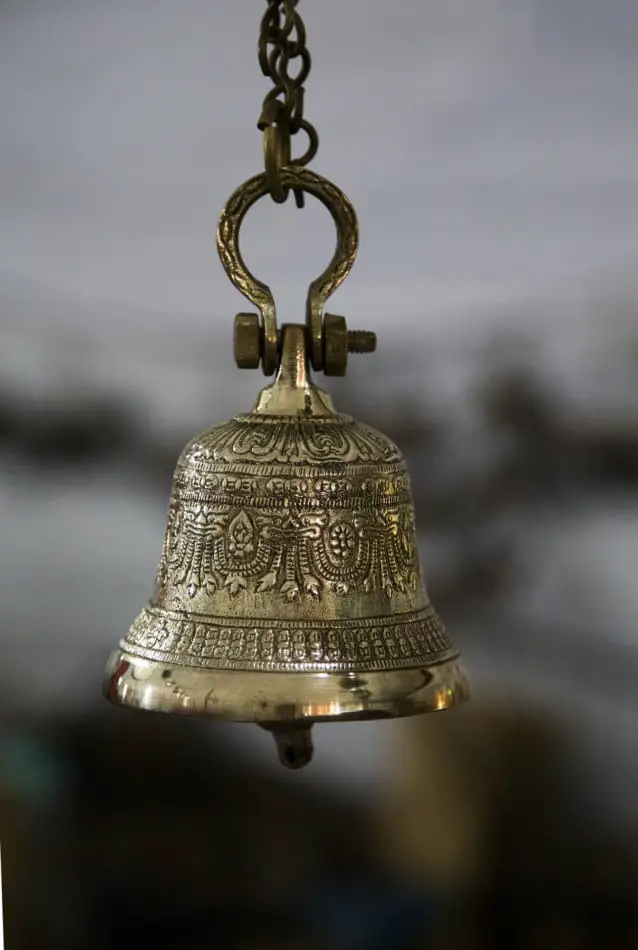Hindu temple is the Holy place meant for worshiping, meditating and to calm down the frustration. Temple is the place of calmness where one can regain his lost peace and perception towards himself and his fellow beings. It is not where exactly the deity lodging but expected to pursue the power of wisdom to those who seek. Anyone can visit the temple despite not Hindus by birth, eventually, pure-hearted and aspiring attitude are ultimate requirements to visit the temple. Non- Hindus may not pursue how to behave inside the temple and hopefully, useful hints are developed under for those who intend to visit temple though not aware of Hindu mythology and habits.
Securing aspects of Hindu mythology lies within the temple and the place is where people peel off their misfortunes, miseries, and opinions. Hence, it has become necessary to follow certain rules before and while entering the temple. Perhaps the place is entirely different from other holy places of Buddhism, Jainism but pursues specification highlighting the spiritual aspects. Hindu myth allows anybody to enter the temple that does not belong to the religion and does not ask for prompt identity from the person pursuing to be Hindu. But they put forth certain principles and disciples that are to be followed inside the temple. Just for the sake of peace, relaxation and attribute alone people visit the temple. Positive vibration that is gained inside the temple is not equivalent to other places.
1. Constraint followed entering temples of Hindus

People, especially non-Hindus, that are willing to enter the temple should clean themselves physically and get prepared for visiting the Holy place. Prior bathing is insisted by the myths and it is believed that personal cleanliness is next to godliness. Clean washed clothes that do not make eye contact with clothing are necessary. Avoid wearing animal skinned clothes visiting the temple but fully formal and official wears are accepted.
2. Outfits for Men and Women

Women are asked to wear full or half sleeved tops along with the long falling bottom. Westernized dresses are completely prohibited as it may distract the attention of others inside the temple besides disrespectful. Men are suggested to wear formal trousers and shirts or T-shirts that are comfortable for them. Men are requested to avoid wearing shorts and three-fourth trousers as they may look disrespectful. Hindu temple is known for its respect beyond the spiritual powers deity should be worshiped with respect in all manners.
3. Personal behavior inside the temple

The behavioral sense is a worthy attribute that everybody should possess while visiting the Hindu temples. Calm, polite behavior is the best choice of the attribute that is to be followed inside the temple particularly, the inner sanctum. Avoid shouting or talking loudly among themselves or to the priest in the temple again it may be disrespectful and distracting. Circumambulate outside the sanctum calmly and silently.
4. Offerings to the temple:
Hindu deity is always worshiped with offerings that are mostly vegetarian edibles. Minute made dishes rich in sprouts are offered to God by the priest inside the temple. It is also distributed among followers and outsiders after rituals like pooja. Beyond the offerings, devotees are welcome with offerings of their own either prepared by them or bought outside.

It is more often bought outside rather than prepared by the devotees in their homes because it is prohibited to accept the offerings prepared by the devotees in their homes. Those offerings that are prepared by the priest inside the ‘’madapali’’ of the temple are offered to the deity. ‘’Madapali’’ means place inside the temple where the act of making offerings are undertaken.
5. Ring of the Bells

Ringing the Bells is the sign of occurring pooja. People are notified or been insisted on the commencement of the pooja utilizing the Bells that are hanging predominantly amidst of the temple. Devotees are allowed to ring the Bells too, as a sign of devotion. Moreover, ringing the Bells rather commencement of pooja is also considered as the positive sign among Hindus. It is preached to ring the Bells three times once.
6. Foot wearing and removing

Holy places like Hindu temples are not allowing the devotees to wear footwear inside the temple. The unique column is allotted outside the Temple corridor, people are asked to leave their belongings and remove their footwear, too. Some Hindu temples are not allowing men to wear shirts inside the temple.
For instance, Guruvayoorappan temple in Kerala, Thiruchendur Murugan temple in Tamil Nadu is known for this specification. Hindus believed that the positive vibration adheres to the bare body despite the dressed in the soul. Women are asked to wear more ornaments while visiting the temple because Gold imbibes the positive vibration more instead.
7. Circumambulation across temple
People once worshiped the deity and received the holy spiritual water from the priest are tracked to outside the sanctum and circulate through the corridor. They are not supposed to touch the deity and take photographs of them which are strictly prohibited. Most of the Hindu deity idols are made of precious metals and a mixture of metals hence touching and snapping at them is prohibited. One or three times circumambulation is carried off and while circulating the next level deities are prone to worship.
In a Hindu temple, there maybe 8 to 10 deities to worship with unique importance and devotees are asked to visit them one by one alone or along with the guide. Every deity possesses its specific method of worship and it is intended to follow while praising the Lord.
8. Praying position
The most important thing followed inside the temple is the praying position. Everyone should stand erect by keeping hands folded in position with the palms touching close to each other. This position is known as ‘’Namaskar’’ which means denoting respect to other people or God/ Goddess. Do not close eyes while worshiping the deity in the temple try to watch the pooja rituals conducted and the ‘’Aarthi’’ offered to the God.
9. Significance of Aarthi
Aarthi is the light blown to show the idol of the deity resided in the inner sanctum. Only with the help of Aarthi alone devotees can see the idol and it is a very special moment that they should not miss, of course. The honorable priest shows the Aarthi after the completion of rituals to the deity at last. People standing outside sanctum should never miss the chance to worship God in favor of divine light.

This act of showing Aarthi to the idol is carried away in all sections of deities in the temple. People, especially Non- Hindus, keep patience to receive all the blessings in every sanctum.
10. Distribution of Prasadham
Prasadham is nothing but the devotional offering made by the priest or devotees to the God or Goddess. In the former part of this article, the importance of making Prasadham is dealt much henceforth this part of the article deals with the distribution importance of the same.
Distributing the prasadham carries very much earns because the poor or disabled people seen outside the temple may be benefitted with this prasadham. Also, the devotees should not evade receiving the prasadham distributed. Hindus do not miss but non-Hindus may likely evade hence they are insisted to accept the offering. Probably, the nutrient-rich edibles are distributed as prasadham hence it is better to accept them rather than exclude.
11. Sanitation process
Above all, the important thing that is necessary to follow while visiting the temple is the cleanliness. People co-operate with the temple trustees and house-keeping staff to keep the temple clean and spiritually aromatic. Most of the Hindus accompany the sanitation process along with the house-keeping team. This brings lots of earns and peace to the mind of volunteers and thereby enrich the green environment within the temple.
Planting plants and trees with periodical watering enrich the eco-friendly environment to the temple. Trashing the wastes into the bins allotted specifically helps clean corridor throughout the temple. Mis proper handling of Diyas is prohibited that may haunt the cleanliness and thus Diyas are lighted in the specific place allotted for. Spilling the Prasadham is prohibited while distribution and eating to enable floor maintenance of the temple.
Animals like elephants and cows are fed, taken care of in separate places in a hygienic manner. People should come forward offering special donations to take care of the animals under the care of the temple. The unique practice is followed to feed the same by the devotees rather than offering money. Perhaps, following personal cleanliness is followed in that too.
Dredging the spiritual tank present inside the temple is carried over periodically. This is done to save the living beings in the water and also to enable a fresh environment throughout the temple. Trashing human waste is strictly prohibited throughout the campus of the temple and even outside the campus.
12. Significance of surveillance
It is instructed to the devotees that they are under surveillance hence co-operating to ensure peaceful worship while inside the temple. The surveillance is must to avoid irrational attack by strangers. Hindu temple welcomes not the Hindus alone but the people of all religions. But all it wants from devotees is the calm and polite behavior throughout worship.
